#pulitzer prize
Text




This man is utterly, utterly loathsome and racist.
He also has three Pulitzer Prizes. Which says it all.
#free palestine#muslims#nyt#pulitzer prize#journalism#democrats#republicans#politics#middle east#iran#iraq#usa#animal planet
108 notes
·
View notes
Text

William C. Beall ~ Pulitzer Prize. 1958
102 notes
·
View notes
Text

Fifty years before social media, Robert Frost saw what was coming..
#Robert Frost#New England#American poet#poet laureate#Pulitzer Prize#US authors#literacy#sign of the times#USA#famous quotes#prophetic words#prescient#social media
99 notes
·
View notes
Text
Milestone Monday
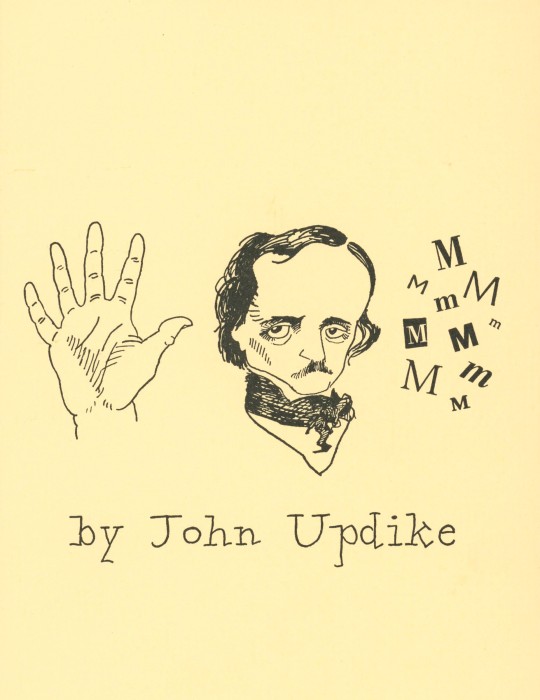

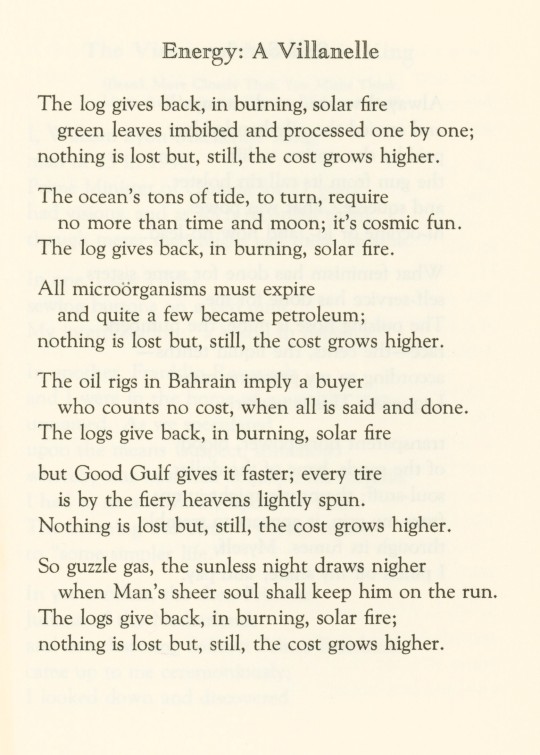


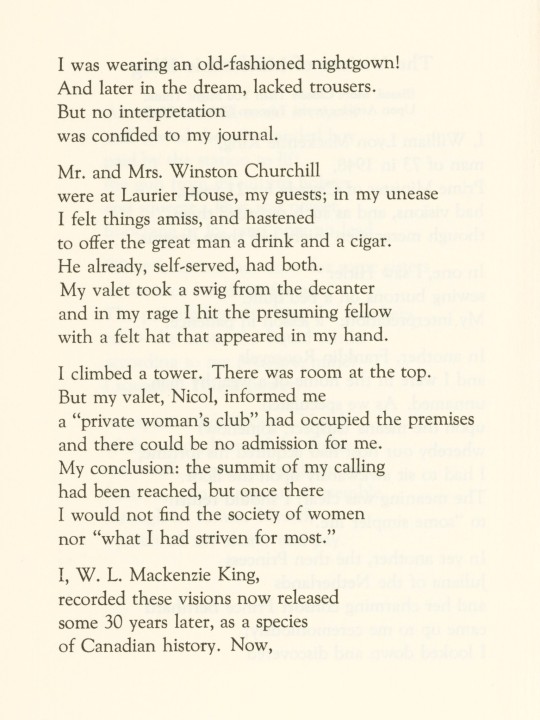

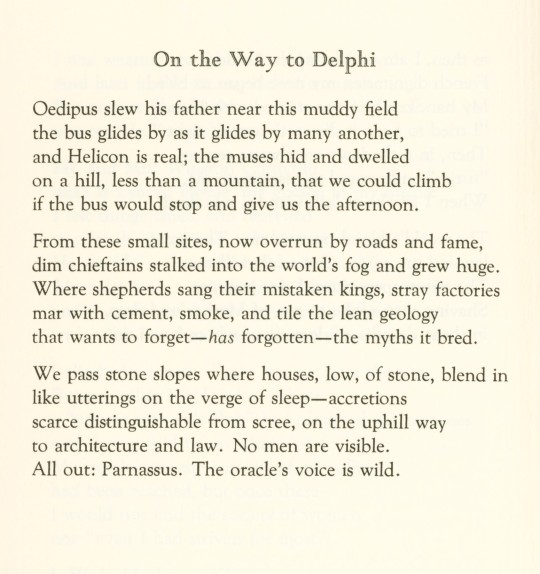
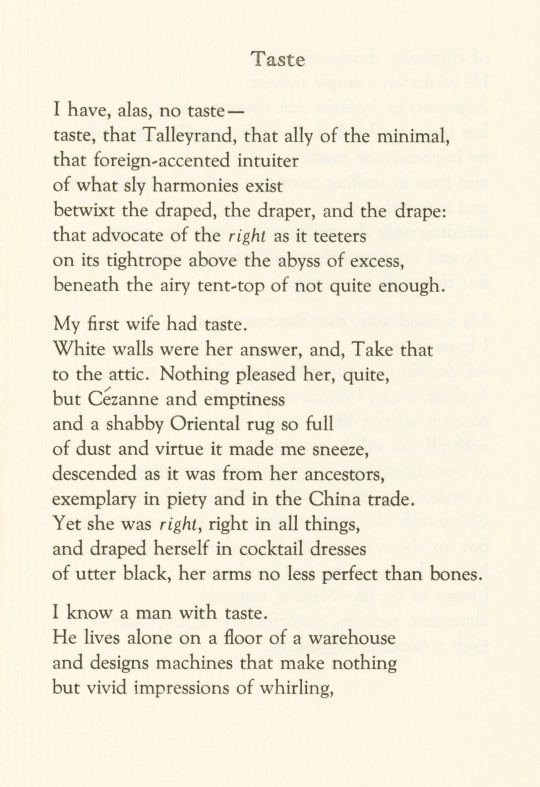

March 18th is the birthday of acclaimed American novelist, poet, and short-story writer John Updike (1932-2009). Updike was inspired to become a writer by his mother’s attempts to get published during his childhood and recalled fondly the memory of her writing desk with all its admirable equipment. By his early twenties, Updike had published a poem in the New Yorker as well as a collection of poetry with Harper & Brothers. His early successes went on to spur a prolific and varied career that included being one of only four writers to receive the Pulitzer Prize for Fiction more than once in 1982 and 1991.
To mark what would have been Updike’s 92nd birthday, we’re sharing his signed limited-edition chapbook Five Poems. Published in 1980 by Bits Press out of Cleveland, Ohio, Five Poems is letterpress printed in an edition of 185 copies with a hand-sewn binding and a clever rebus cover drawn by Updike.

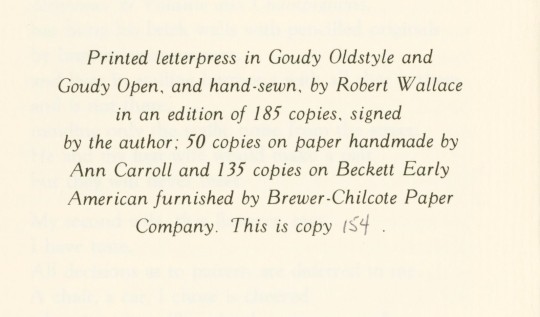
Read other Milestone Monday posts here!
See other rebus examples within our collection here!
– Jenna, Special Collections Graduate Intern
21 notes
·
View notes
Text
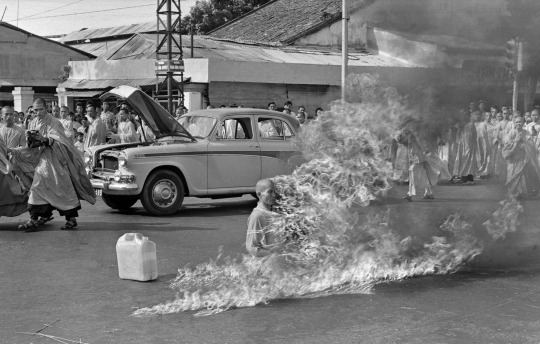
Malcolm Browne - The Burning Monk (1963) Thích Quảng Đức protesting the persecution of Buddists by altruistic suicide.
Browne photographed Vietnamese Mahayana Buddhist monk Quảng Đức's self-immolation on a busy intersection in Saigon, during which he remained perfectly still. "I just kept shooting and shooting and shooting and that protected me from the horror of the thing."
“No news picture in history has generated so much emotion around the world as that one.” --President John F. Kennedy
Self-immolation (the word immolation originally meant "killing a sacrificial victim; sacrifice"), is tolerated by some elements of Mahayana Buddhism and Hinduism, and it has been practiced for many centuries for various reasons, including political protest.
Browne won a Pulitzer Prize for International Reporting and received many job offers, eventually leaving the AP in 1965.
Malcolm Browne: The Story Behind The Burning Monk

The procession from the monastery to central Saigon - Malcolm Browne–AP
"The monks were very much aware of the result that an immolation was likely to have. So by the time I got to the pagoda where all of this was being organized, it was already underway—the monks and nuns were chanting a type of chant that’s very common at funerals and so forth. At a signal from the leader, they all started out into the street and headed toward the central part of Saigon on foot. When we reached there, the monks quickly formed a circle around a precise intersection of two main streets in Saigon. A car drove up. Two young monks got out of it. An older monk, leaning a little bit on one of the younger ones, also got out. He headed right for the center of the intersection. The two young monks brought up a plastic jerry can, which proved to be gasoline. As soon as he seated himself, they poured the liquid all over him. He got out a matchbook, lighted it, and dropped it in his lap and was immediately engulfed in flames. Everybody that witnessed this was horrified. It was every bit as bad as I could have expected." -- Malcolm Browne
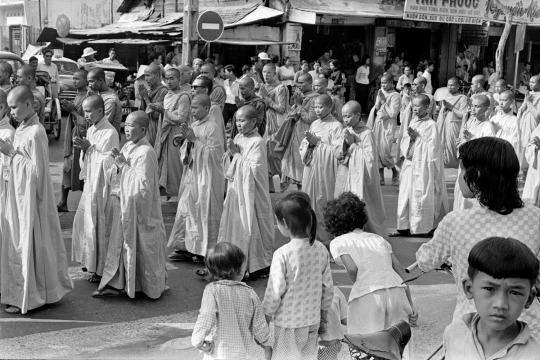

Buddhist monk Quang Duc emerged from a car and sat in the center of the intersection while a younger monk poured gasoline over him. Malcolm Browne–AP
"I don’t know exactly when he died because you couldn’t tell from his features or voice or anything. He never yelled out in pain. His face seemed to remain fairly calm until it was so blackened by the flames that you couldn’t make it out anymore." -- Malcolm Browne

In the air was the smell of burning human flesh; human beings burn surprisingly quickly. Behind me I could hear the sobbing of the Vietnamese who were now gathering. I was too shocked to cry, too confused to take notes or ask questions, too bewildered to even think.
Later we learned that the man was a priest named Thich Quang Duc who had come to the square as part of a Buddhist procession, had been doused with gasoline by two other priests, had then assumed the cross-legged "lotus" position and had set a match to himself. As he burned he never moved a muscle, never uttered a sound, his outward composure in sharp contrast to the wailing people around him. -- David Halberstam, American journalist who was present at the scene


Monuments to Thich Quang Duc, the Buddhist monk whose self-immolation hit the headlines of the world in 1963.
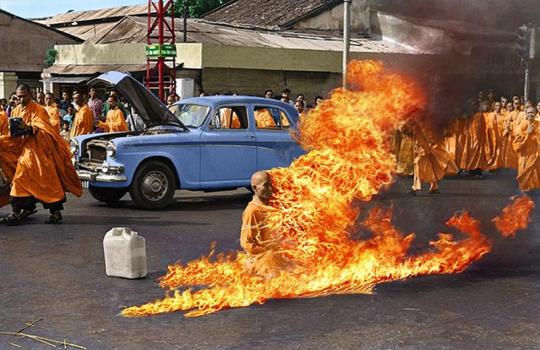
Self-immolation has been a Buddhist and Hindu practice for many centuries for various reasons.

A Hindu widow burning herself with the corpse of her husband, 1657
#david halberstam#malcolm browne#Thich Quang Duc#self immolation#mahayana buddhist#buddhist monk#buddhist#hindu#viet nam#Pulitzer Prize#historical photos#phtography#award winning photography#monument#statue
39 notes
·
View notes
Text

DETERMINATION.
143 notes
·
View notes
Text
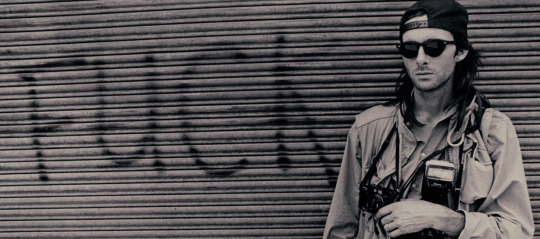
Kevin Carter, (1960-1994)
#photographers on tumblr#biography#magnum photos#b&w photography#b&w aesthetic#photography#film photography#pulitzer prize
12 notes
·
View notes
Text

Tonight’s libation is a Brandy Crusta
2 oz ABK6 VSOP Cognac
1/4 oz 1804 Grand Imperial orange liqueur
1 teaspoon Lazzaroni Maraschino liquor
1 dash Angostura bitters
1/2 oz simple syrup
1/2 oz lemon juice
Shaken with ice , strained into a sugar rimmed glass and garnished with a lemon twist.
Shared with a Pulitzer Prize winning novel and a good cigar
#cocktail#ABK6 VSOP cognac#1804 Grand Imperial orange liqueur#angostura bitters#lazzaroni maraschino liquor#Brandy Crusta#cigar#Pulitzer prize#Cuba#cigars
26 notes
·
View notes
Text

Anthony Perkins in "Look Homeward, Angel," which played at the Ethel Barrymore Theatre from November 28, 1957 to March 7, 1959, and then moved to the 54th Street Theatre from March 9 to April 4, 1959. It won the Pulitzer Prize for Drama in 1958 for playwright Ketti Frings, based on the novel by Thomas Wolfe.
Photo: Friedman-Abeles via NYPL
#vintage New York#1950s#Friedman-Abeles#Thomas Wolfe#Anthony Perkins#Ketti Frings#theater#drama#Broadway#Pulitzer Prize#November 28#Nov. 28#March 9#Mar. 9#March 7#Mar. 7#April 4
79 notes
·
View notes
Text
“After I won the Pulitzer … My parents were stunned, and extremely proud, but I remember my father said, ‘You should always have a backup plan. You’re like a politician now, and you will go in and out of favor.’”
— Jhumpa Lahiri, in an interview with Francesco Pacifico.
5 notes
·
View notes
Text

Just One More Page Challenge Day 7: Award Winning
This book was actually recommended to me by my favorite high-school English teacher (hello Sarah!) and it totally blew me away.
It can be intimidating to read extremely hyped up, award winning books but All The Light We Cannot See managed to exceed my expectations!
#jompbpc#justonemorepage#just one more page challenge#anthony doerr#all the light we cannot see#pulitzer prize
69 notes
·
View notes
Text

Out this week: I Escaped a Chinese Internment Camp (Lev Gleason, $19.99):
This comic by Fahmida Azim, Anthony Del Col, Josh Adams and Walt Hickey originally appeared on Business Insider and went on to win the Pulitzer Prize. It tells the story of Zumrat Dawut, a Uyghur mother of three living in China who was arrested and sent to a brutal detention area. The story is based on interviews with her as well as her testimony to the United Nations Human Rights Council.
See what other comics and graphic novels arrive in stores this week.
#new comic book day#can't wait for comics#ncbd#new comics day#new comics#fahmida azim#anthony del col#josh adams#walt hickey#pulitzer prize#i escaped a chinese internment camp#lev gleason
5 notes
·
View notes
Photo
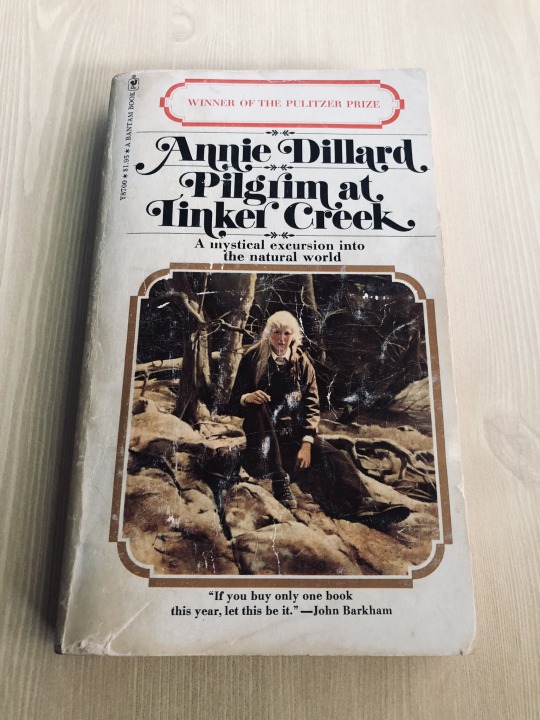
Pilgrim at Tinker Creek
Annie Dillard
This is 1 of 12 vintage paperback classics that comprise our current giveaw@y.
23 notes
·
View notes
Text



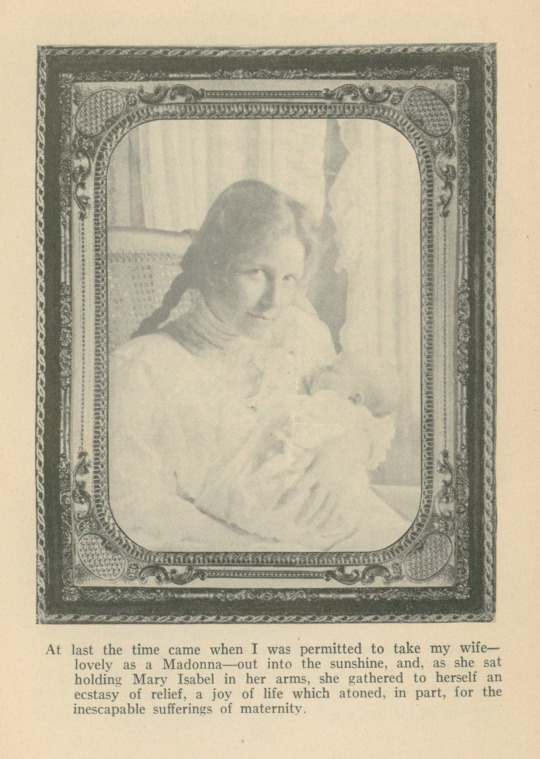

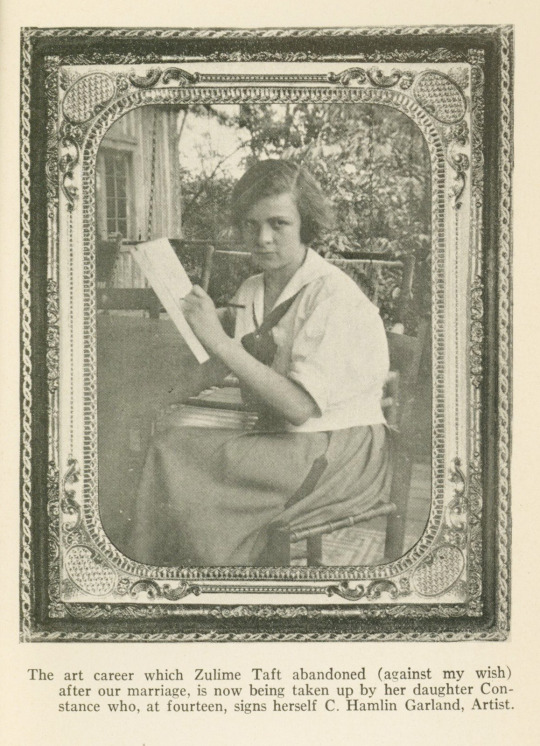


Publishers' Binding Thursday
This Publishers' Binding Thursday we've got a lovely Midwestern book to share. It is A Daughter of the Middle Border by Wisconsin poet, novelist, and short story writer Hamlin Garland. The book is the sequel to Garland's autobiography A Son of the Middle Border and continues his story as he sets out for Chicago and settles into a Bohemian encampment of artists and writers where he meets his wife, the artist Zulime Taft. A Daughter of the Middle Border won the 1922 Pulitzer Prize for biography or autobiography.
The binding features a scene of a covered wagon at sunset, pulled by what appear to be horses. There is also an ox following the wagon. The title and author's name are printed in red and there is a red border around the front cover. As you can see in the first image shown here, our copy has some damage to the spine that I will be mending with methyl cellulose. We use methyl cellulose for many small in-house repairs needed for things like loose spines because it is stable, non-acidic, and water soluble.
View more Publishers' Binding Thursday posts.
-- Alice, Special Collections Department Manager
#Publishers' Binding Thursday#publishers' bindings#A Daughter of the Middle Border#Hamlin Garland#Pulitzer Prize#methyl cellulose#Zulime Taft Garland#Zulime Taft#book repair#spine damage#autobiography#Alice
34 notes
·
View notes
Text



The Pulitzer Prize winners were announced yesterday, amazingly there were two novels chosen for the award for fiction.
Pulitzer Awards for Books, Drama and Music
Fiction
"Demon Copperhead," by Barbara Kingsolver (Harper)
"Trust," by Hernan Diaz (Riverhead Books)
Finalist:
"The Immortal King Rao," by Vauhini Vara (W. W. Norton & Company)
Drama
"English," by Sanaz Toossi
Finalists:
"On Sugarland," by Aleshea Harris
"The Far Country," by Lloyd Suh
History
"Freedom’s Dominion: A Saga of White Resistance to Federal Power," by Jefferson Cowie (Basic Books)
Finalists:
"Seeing Red: Indigenous Land, American Expansion, and the Political Economy of Plunder in North America," by Michael John Witgen (Omohundro Institute of Early American History and Culture/University of North Carolina Press)
"Watergate: A New History," by Garrett M. Graff (Avid Reader Press/Simon & Schuster)
Biography
"G-Man: J. Edgar Hoover and the Making of the American Century," by Beverly Gage (Viking)
Finalists:
"His Name is George Floyd," by Robert Samuels and Toluse Olorunnipa (Viking)
"Mr. B: George Balanchine’s 20th Century," by Jennifer Homans (Random House)
Memoir or Autobiography
"Stay True," by Hua Hsu (Doubleday)
Finalists:
"Easy Beauty: A Memoir," by Chloé Cooper Jones (Avid Reader Press/Simon & Schuster)
"The Man Who Could Move Clouds: A Memoir," by Ingrid Rojas Contreras (Doubleday)
Poetry
"Then the War: And Selected Poems, 2007-2020," by Carl Phillips (Farrar, Straus and Giroux)
Finalists:
"Blood Snow," by dg nanouk okpik (Wave Books)
"Still Life," by the late Jay Hopler (McSweeney’s)
General Nonfiction
"His Name is George Floyd," by Robert Samuels and Toluse Olorunnipa (Viking)
Finalists:
"Kingdom of Characters: The Language Revolution That Made China Modern," by Jing Tsu (Riverhead Books)
"Sounds Wild and Broken: Sonic Marvels, Evolution’s Creativity, and the Crisis of Sensory Extinction," by David George Haskell (Viking)
"Under the Skin: The Hidden Toll of Racism on American Lives and on the Health of Our Nation," by Linda Villarosa (Doubleday)
Music
"Omar," by Rhiannon Giddens and Michael Abels
Finalists:
"Monochromatic Light (Afterlife)," by Tyshawn Sorey
"Perspective," by Jerrilynn Patton
#pulitzer prize#books#award winners#barbara kingsolver#demon copperhead#trust#hernan diaz#harper books#riverhead books#g-man#beverly gage#stay true#hua hsu#his name is george floyd#robert samuels#toluse olorunnipa#viking books#doubleday books
14 notes
·
View notes
